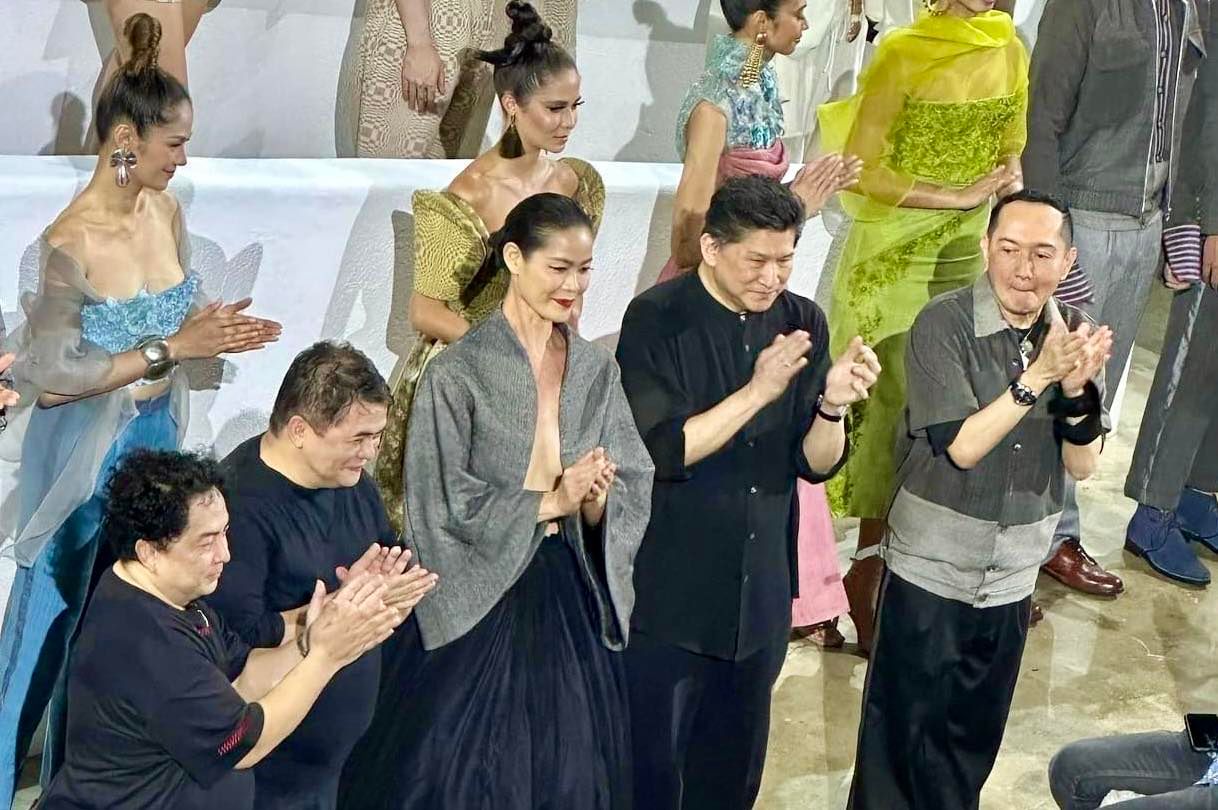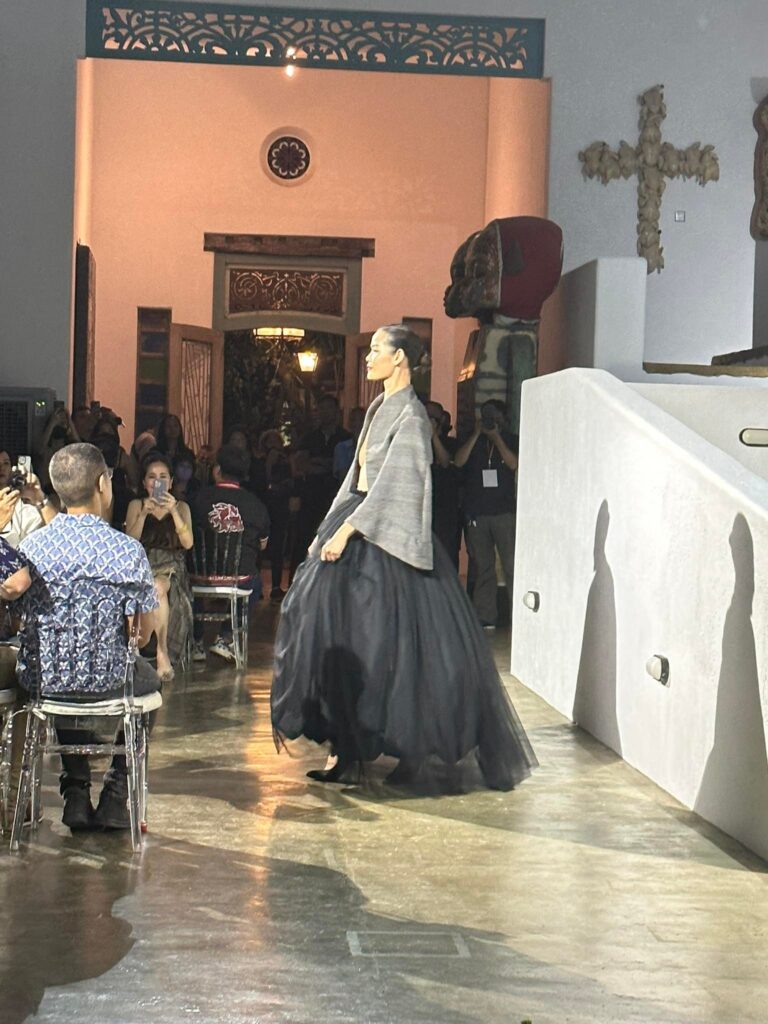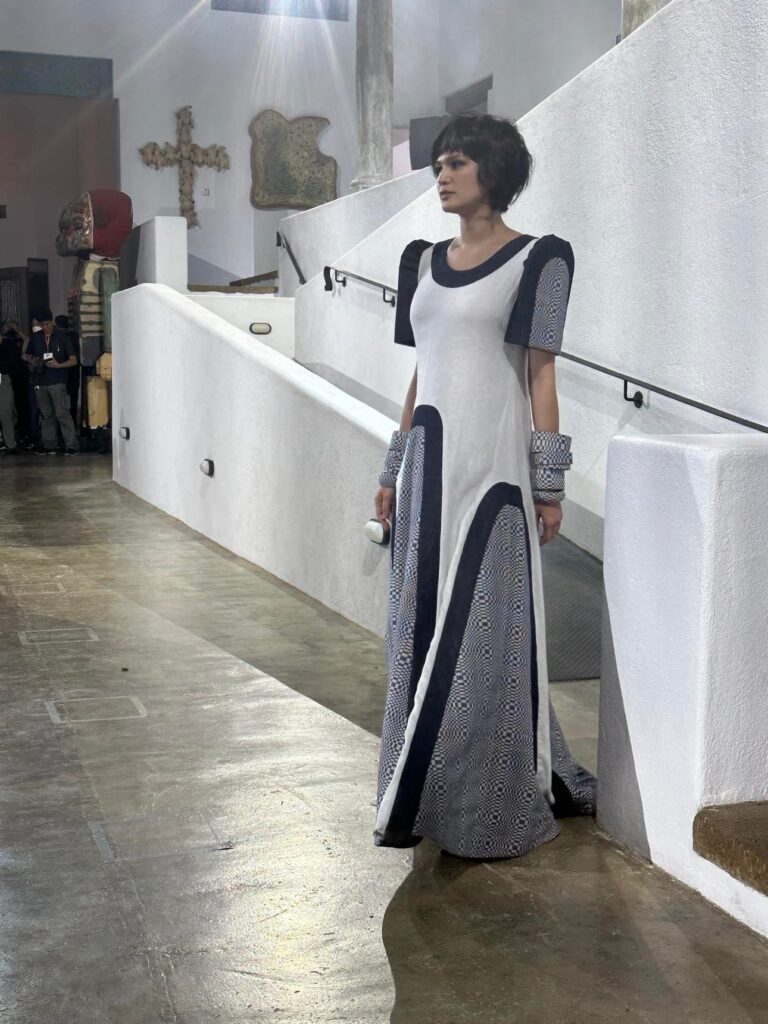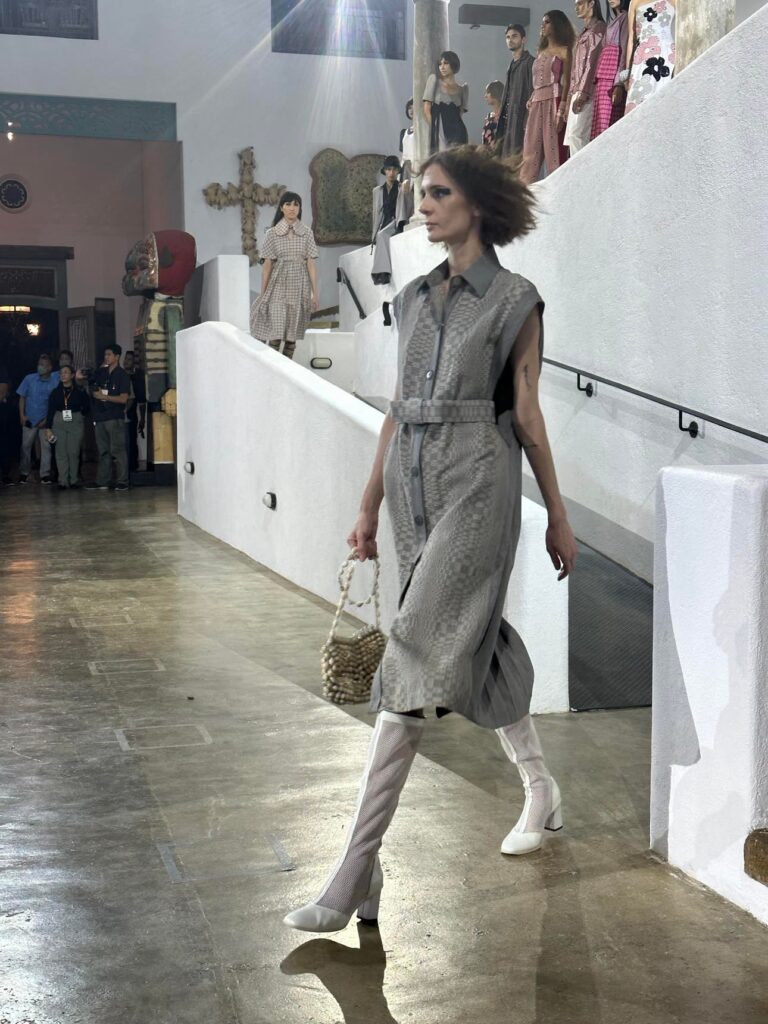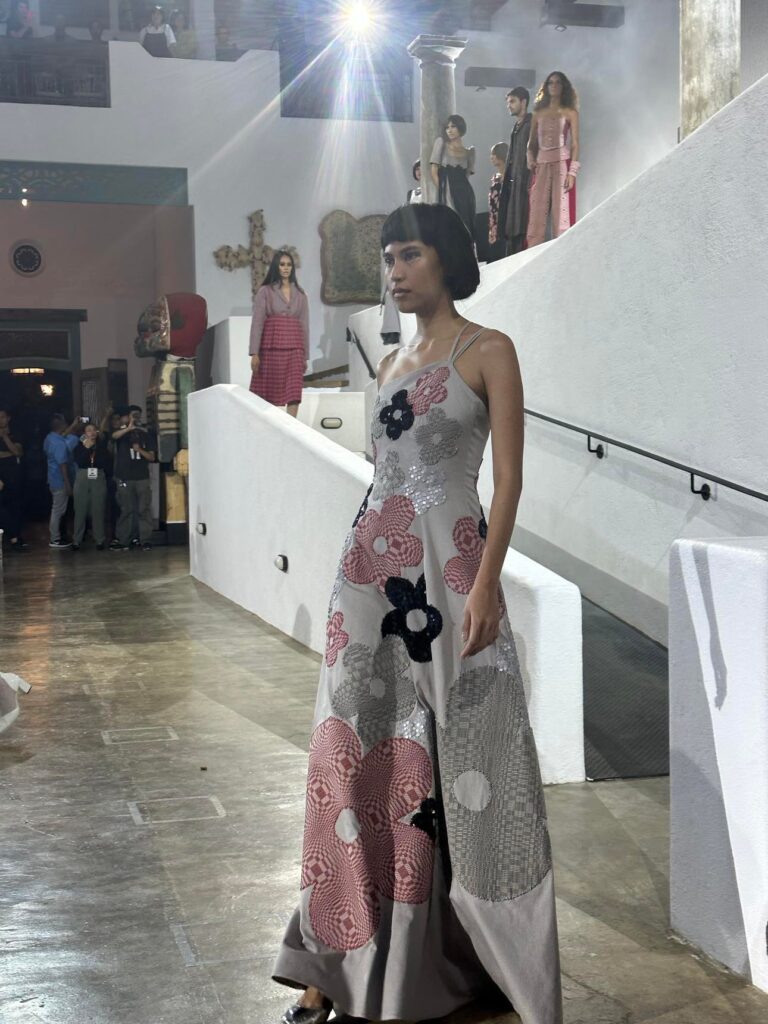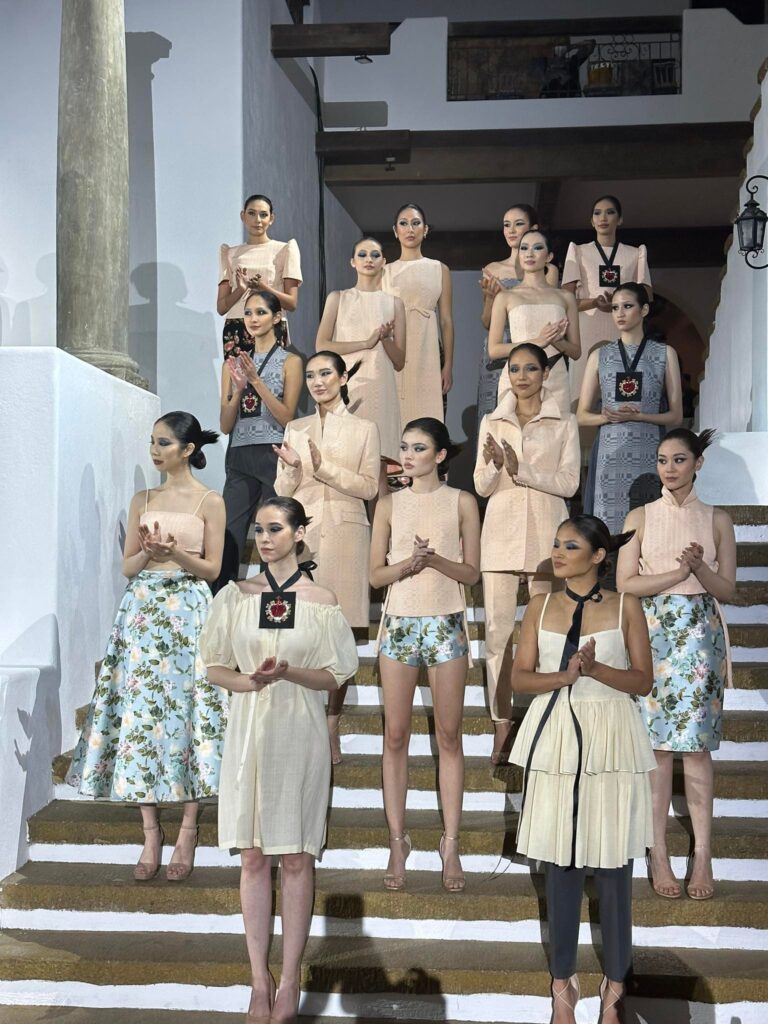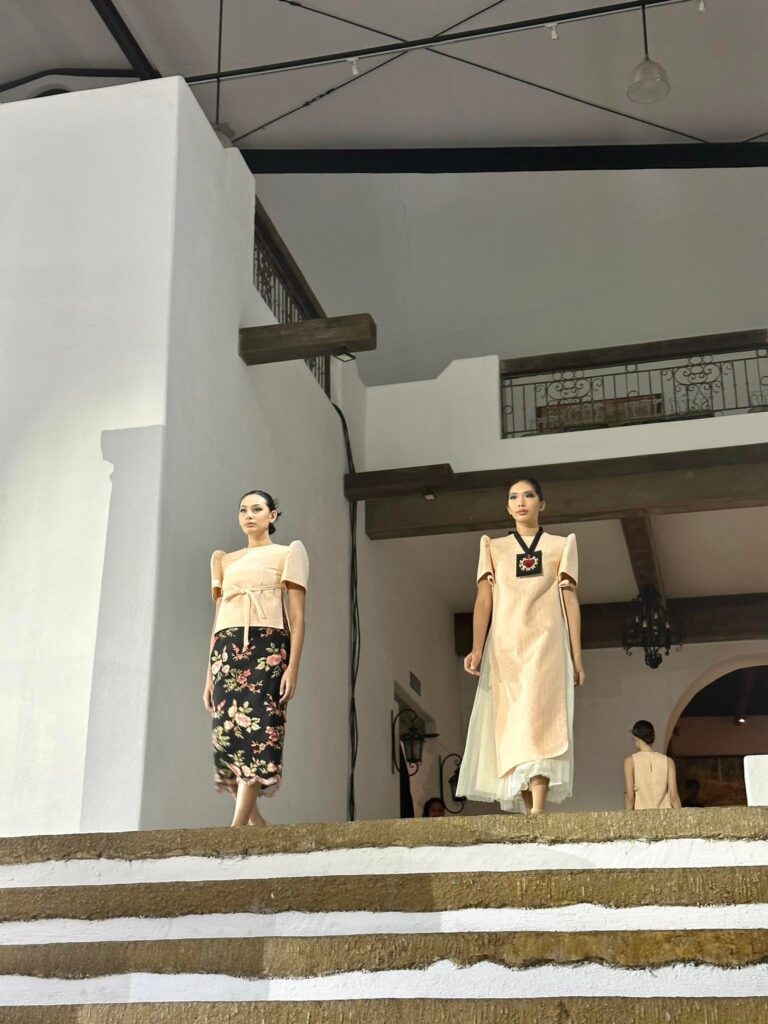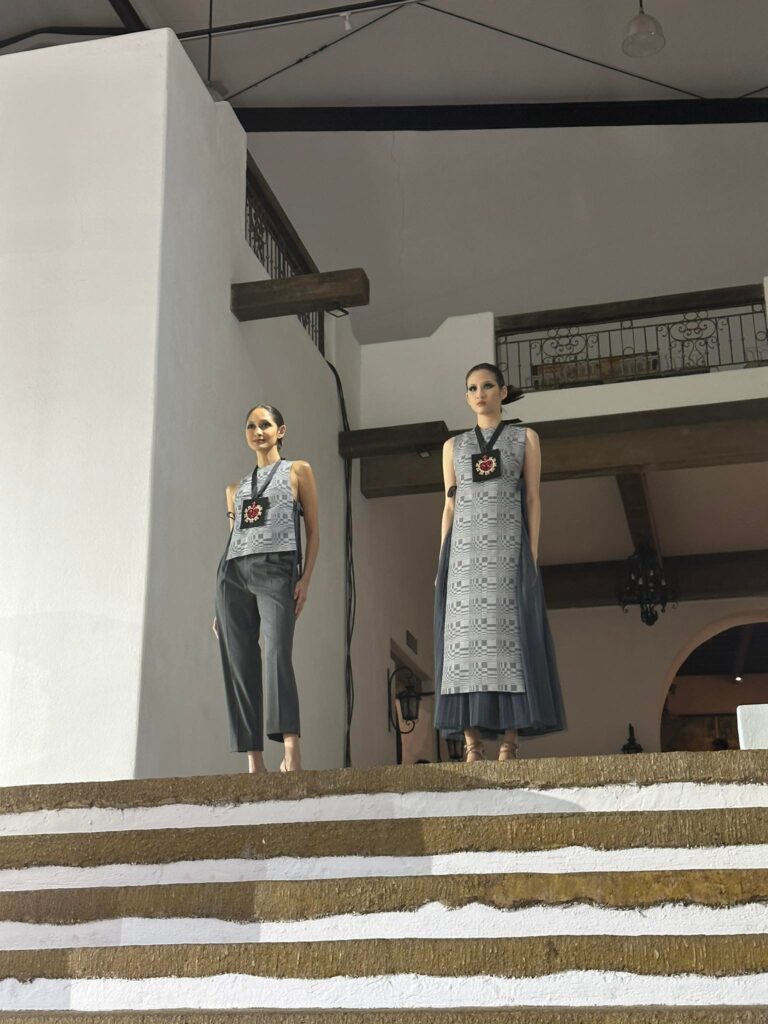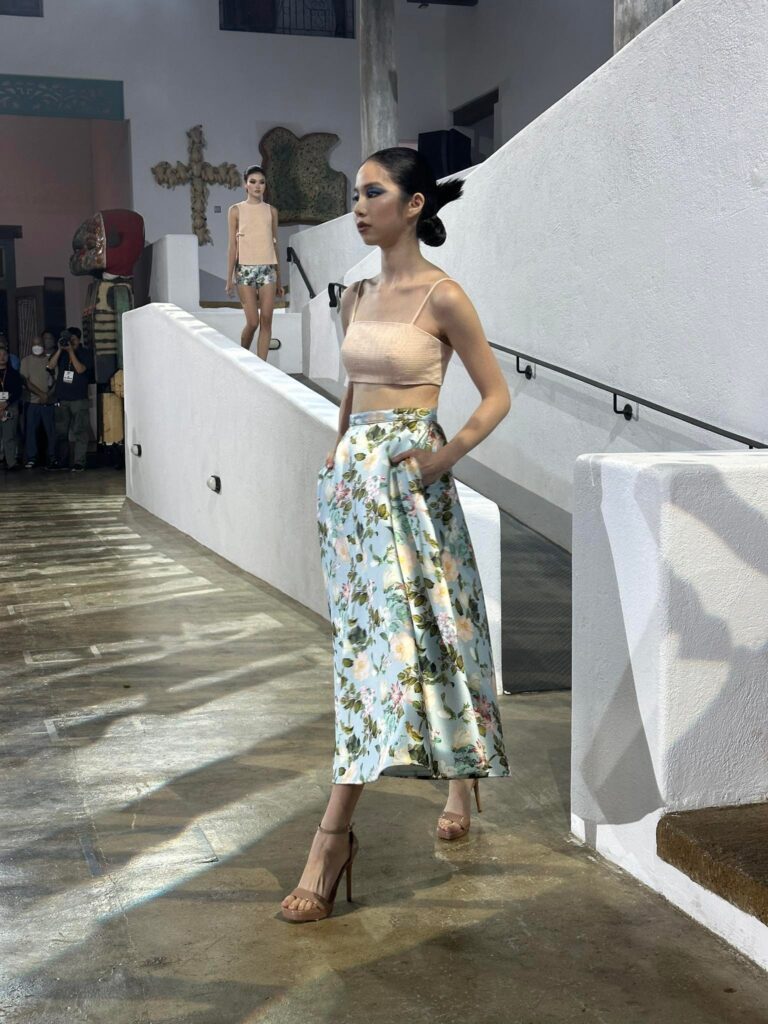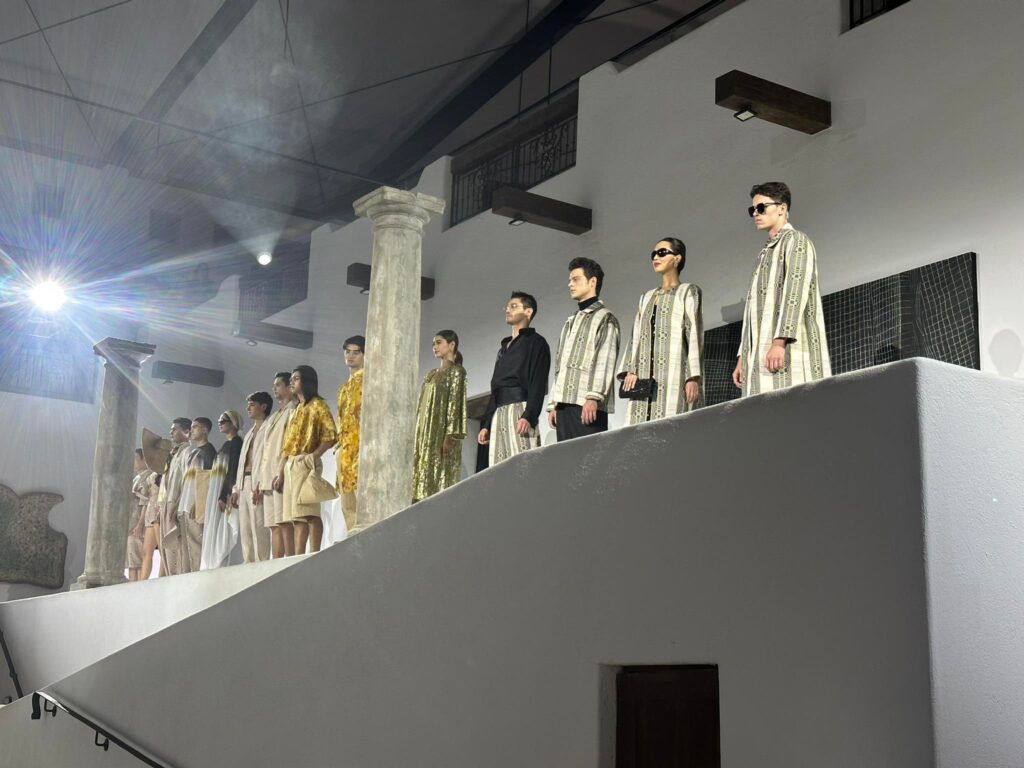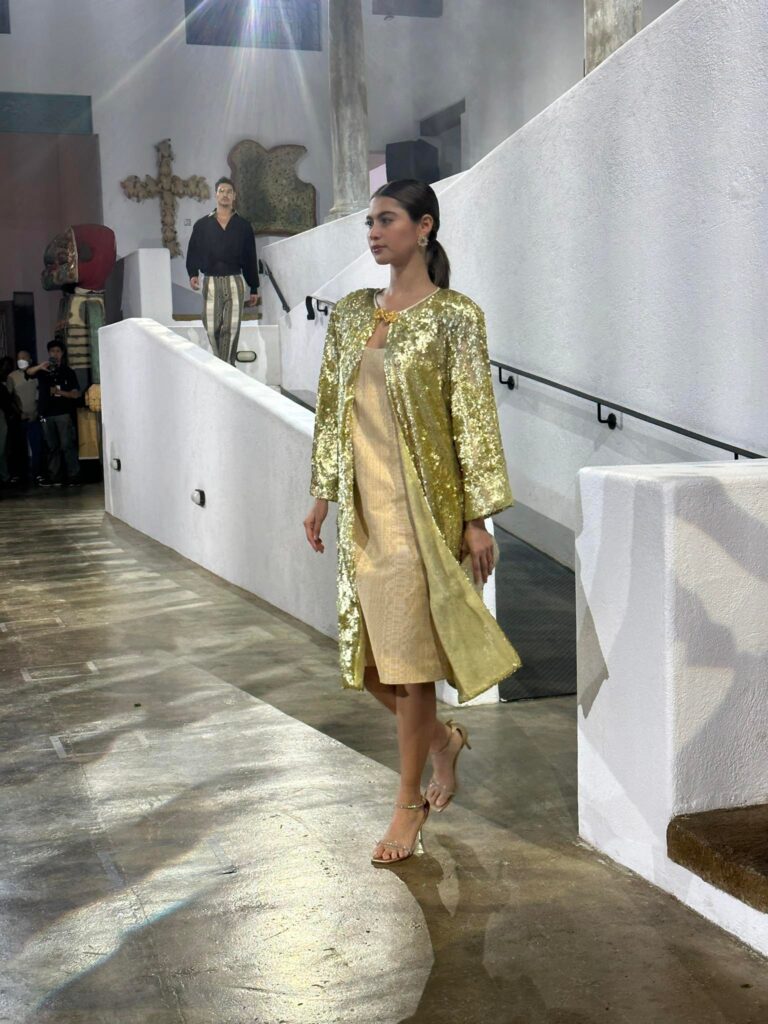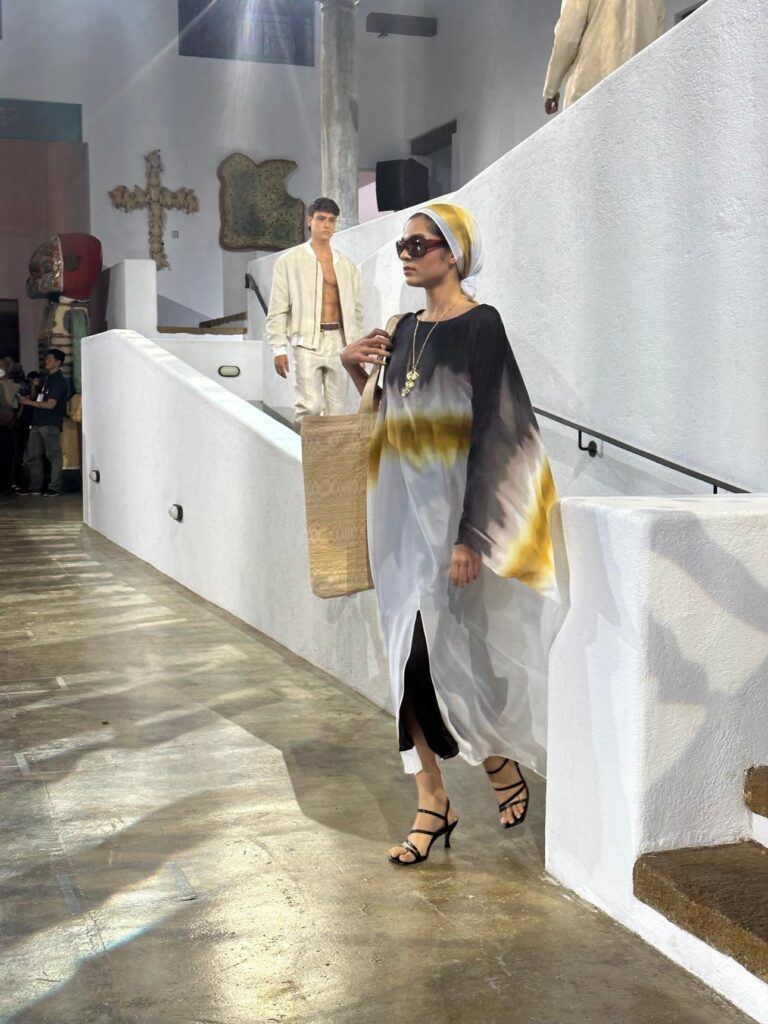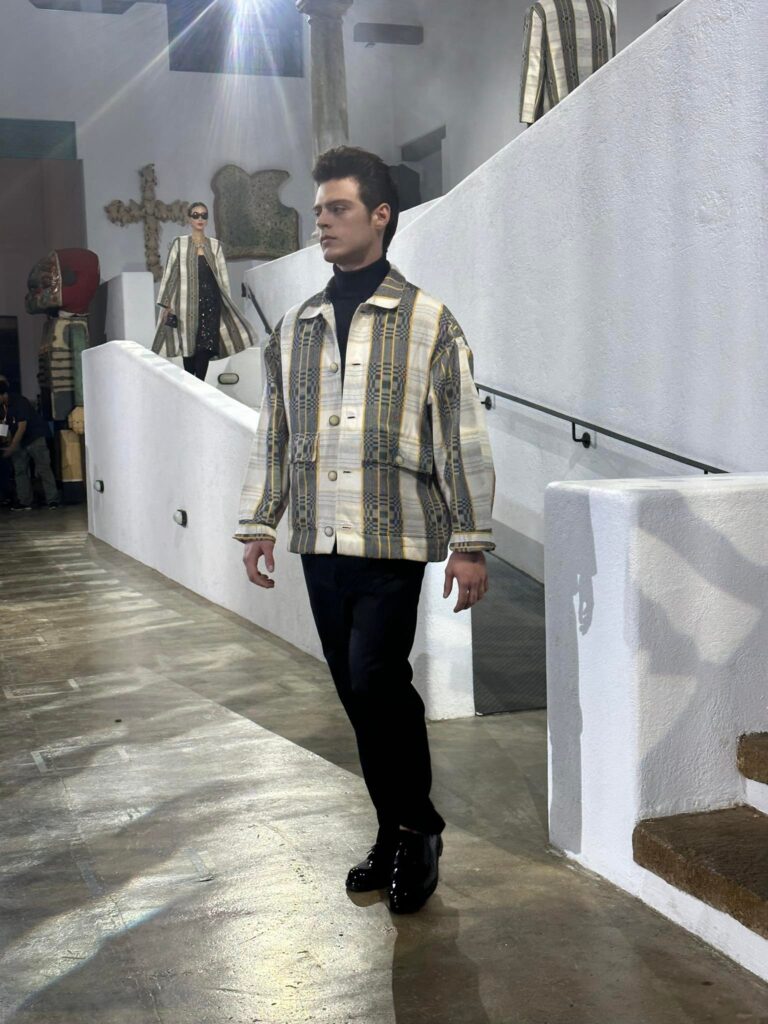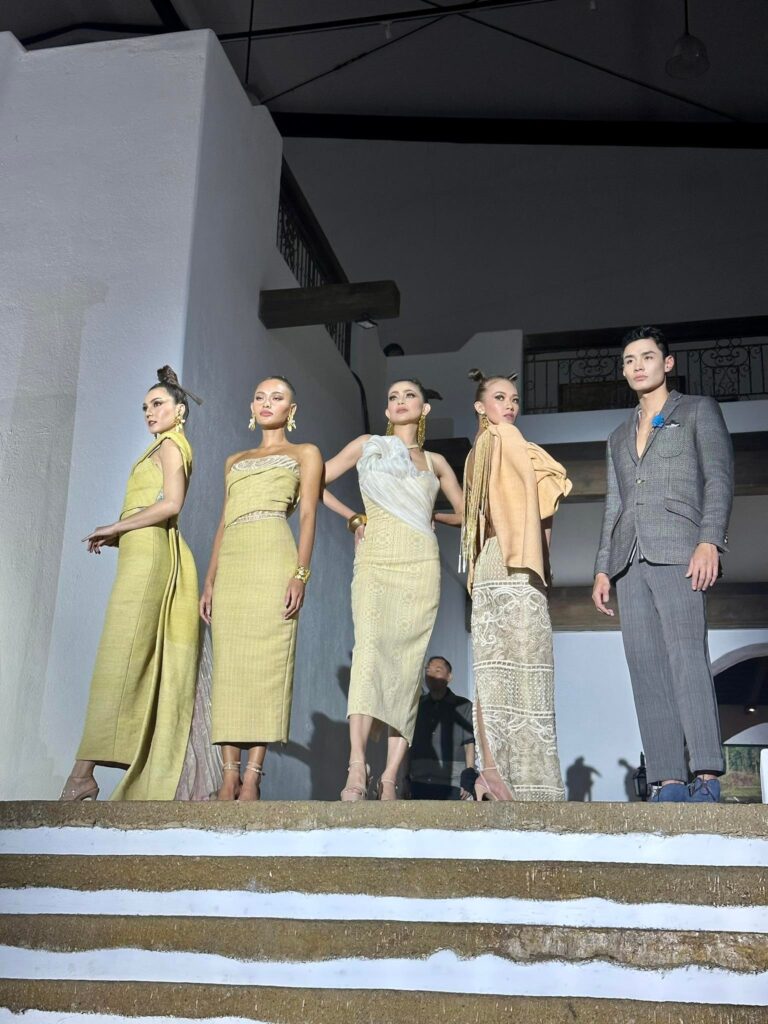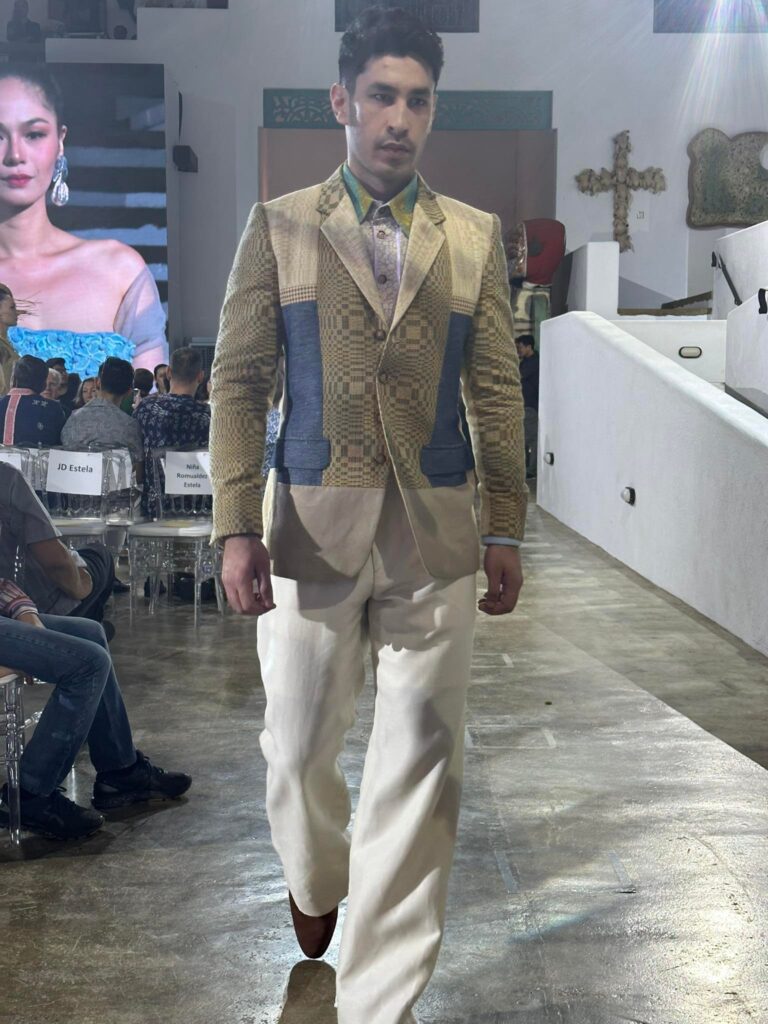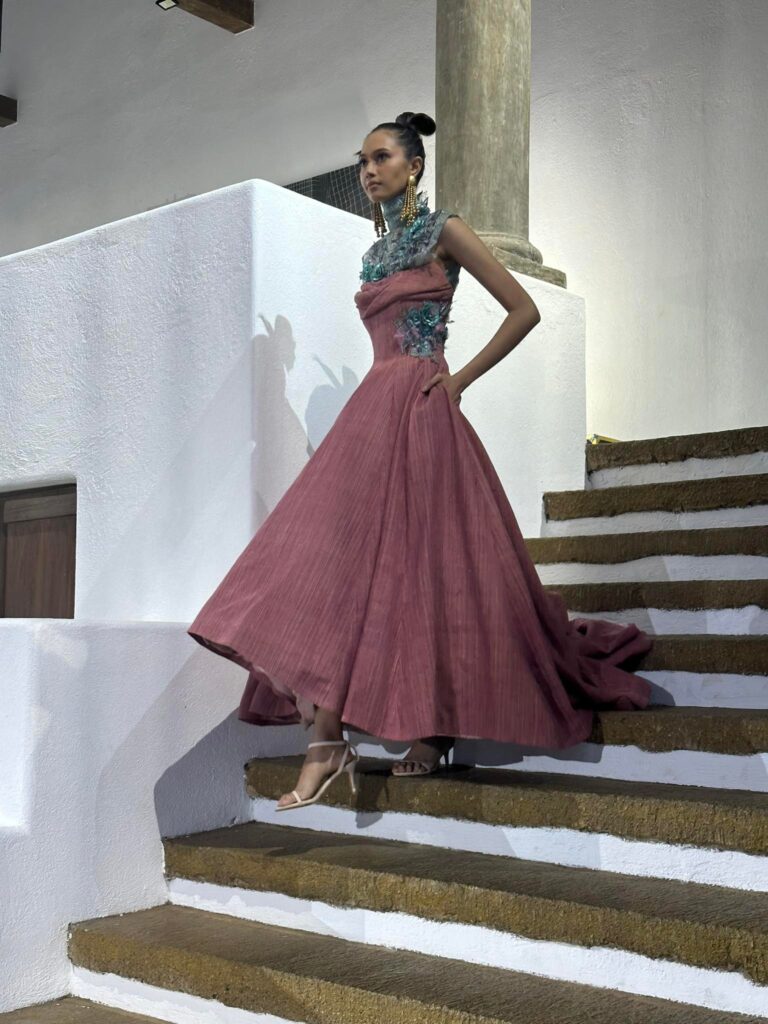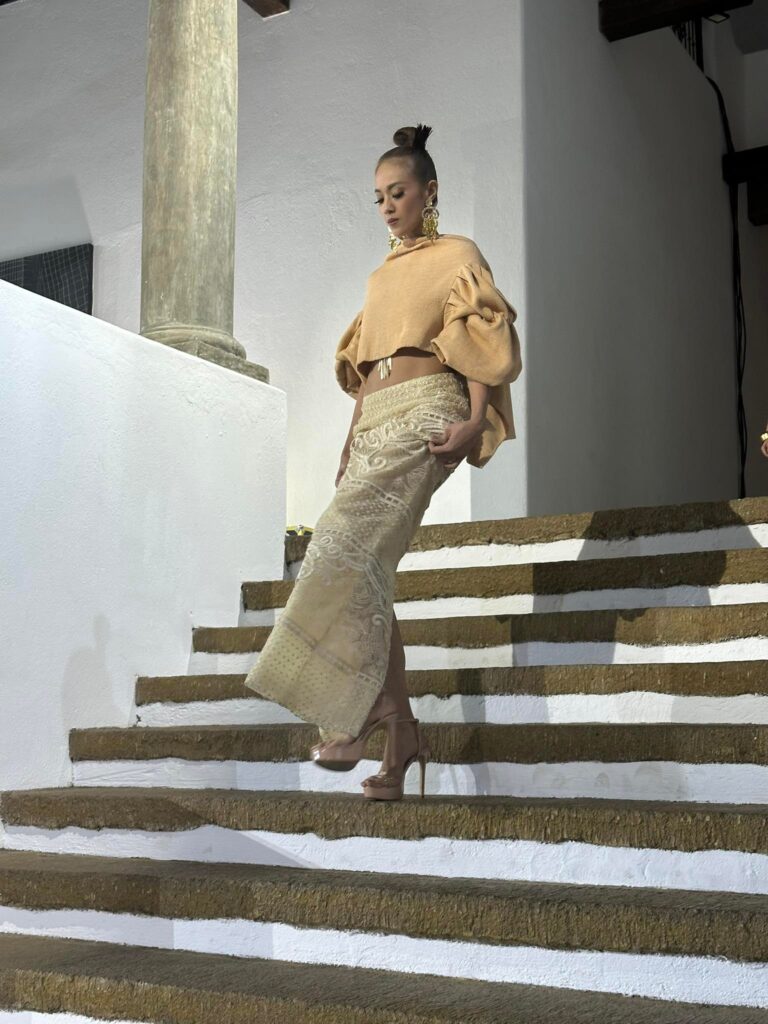Dubbed as “Algodon,” the Spanish word for cotton, the event, one of the first big post-pandemic fashion shows to be staged in Manila, highlighted the use of various inabel fabrics from the Ilocos region on the collections of Vic Barba, JC Buendia, Tonichi Nocom and Randy Ortiz.
Text and photos by Alex Y. Vergara
Four of the country’s leading designers turned the vision of Dr. Joven Cuanang, medical director of St. Luke’s Medical Center, arts patron and proud Ilocano, into reality, as they recently presented their respective collections made partly of inabel at the new wing of Pinto Arts Museum in Antipolo.
Dubbed as “Algodon,” the Spanish word for cotton, the event, one of the first big post-pandemic fashion shows to be staged in Manila, highlighted various inabel fabrics from the Ilocos region as used in the respective collections of Vic Barba, JC Buendia, Anthony “Tonichi” Nocom and Randy Ortiz. Each designer showed 15 to 18 looks. A fifth designer, the ailing Pepito Albert, was unable to finish his collection on time, but was able to produce a lone look that became the show’s finale.
Apart from being one of the first big fashion shows to be staged since the pandemic hit in 2020, “Algodon” was noteworthy in several respects. For the first time in years, the featured designers were able to use inabel (an Ilocano word which means to weave) fabrics. Although inabel fabric can be made of anything that is woven, the type of inabel Ortiz and company used was made almost entirely of cotton.
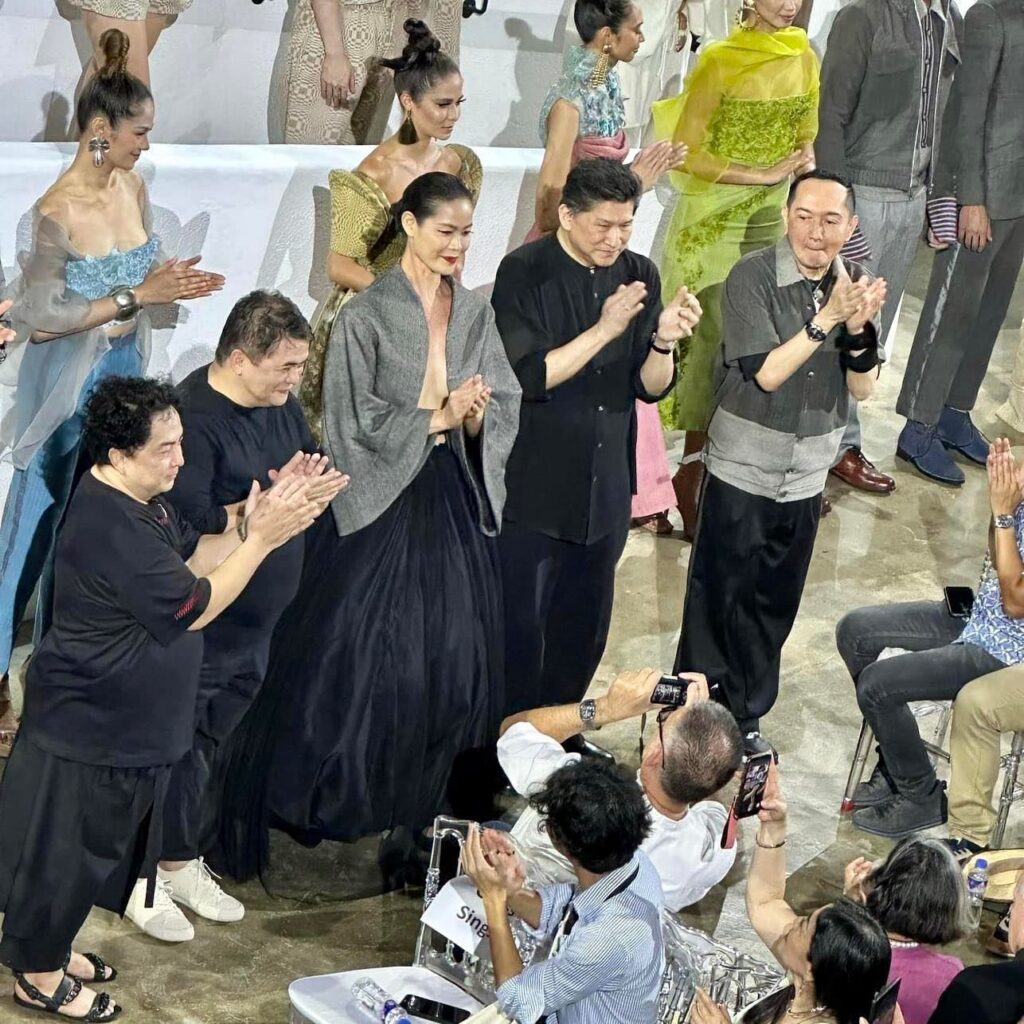
Fashion statement
As the event’s prime mover, Cuanang describes the entire effort as “from farm to fabric to fashion.” “The show,” he added, “is a statement of an idea put into action. Painstakingly, over the last six years, we nurtured it (cotton plant) from seed, thus, [the statement] from farm to fabric to fashion.”
Working with inabel either again or for the first time brought a number of realizations that were unique to each designer. Some, like Barba, also an Ilocano like Cuanang, has been using the fabric way back in high school. Majority of his looks were fashioned purely from inabel. How different is it this time?
“Because the inabel we used is made of cotton, it has more body,” said Barba. Compared to inabel made partly of polyester, the cotton material they used in the fashion show, albeit in limited quantities, was friendlier to both wearer and designer.
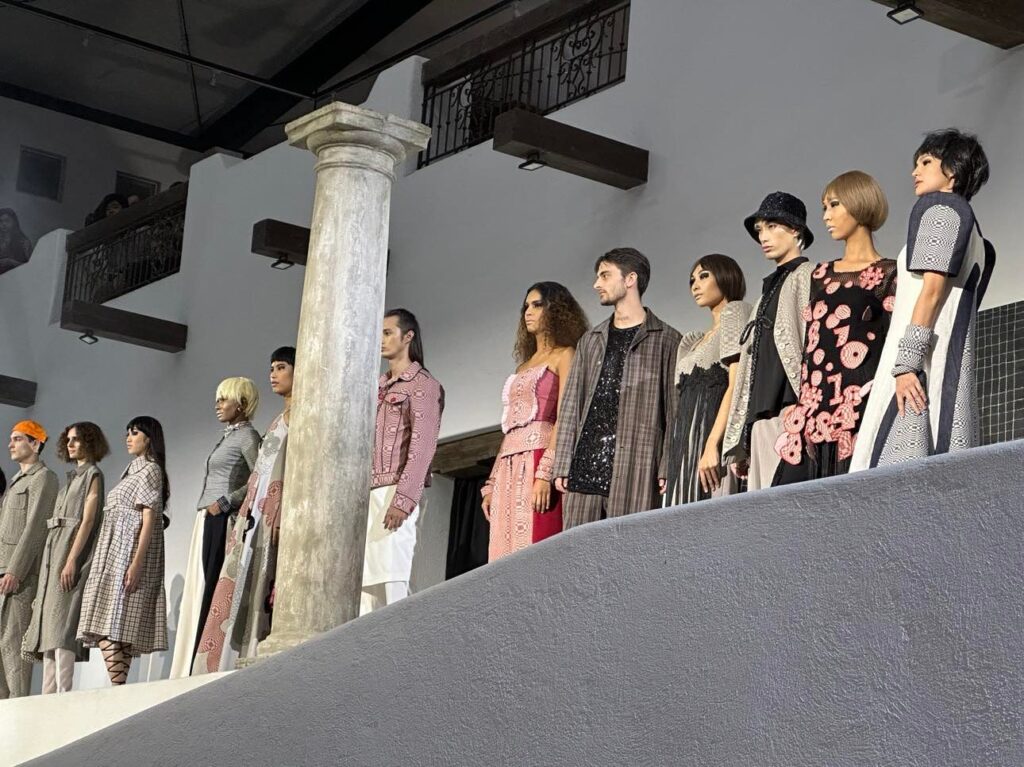
“For the wearer, it’s more breathable because now the pieces are made of cotton,” Barba, who did youngish tailored pieces, including updated versions of the terno and coat dress, added. “For us designers, the material has more body that you don’t have to fuse it with something else.”
And inabel, Barba said, is not limited to the Ilocos region. Generations of Ilocanos who have chosen to settle in nearby provinces and cities such as the Mountain Province and Pangasinan, for example, have come up with their own versions of the inabel in the form of signature weaves and patterns.
For Nocom, one of SM’s resident designers, it was his first time to use the fabric. And just in time, as he’s transitioning from being purely a men’s wear designer to a women’s wear designer focusing on lounge and sleepwear.
Hard to handle
“Overall, it has been a nice and fun experience for me,” he said. “At first, I found the fabric a bit hard to handle, especially when you cut it because it tends to easily come undone. So I had to starch it a little bit for me to be able to cut and manipulate the material further.”
Incorporating it with other fabrics, including satin, Nocom was able to fashion a collection that showed his strength at tailoring as well as his new-found skills in making loose, flowing looks like kaftans and overlays.
“I used most of the inabel for the bottoms and some of the jackets,” he said. “I also maximized it, incorporating it with such items as bags, shoes and even some of the models’ bakya (wooden clogs).”
Known for his clean, tailored looks, Buendia also took the opportunity to show variations of the terno, a figure-friendly version that’s not a jacket nor a bolero with butterfly sleeves, but a stylized bib-slash-apron that can be tied and adjusted on both sides.
“Everybody’s been doing the terno these days,” he said. “So I came up with something relatively new, figure-friendly and easy to fold and pack in a suitcase. You can wear this bib terno with pants or layer it over a little black dress.”
No longer new to using inabel, Buendia also noticed, to his relief, that the cotton-made inabel they were supplied with was easier to manipulate, sew, incorporate or combine with other materials such as mikado silk.
“And even if the inabel we used is made of pure cotton, it’s not as wrinkly, say, as linen because the weave is thicker,” Buendia added.
Think before you cut
Since handwoven fabric is “not really something you can readily play around with, you have to be careful,” said Ortiz. This, and the fact that inabel as a material is hard to source because supply is limited, pushed designers like him not only “to think twice before you cut,” but also to look for other suitable materials to combine it with.
In Ortiz’s case, he resorted to using a bit of brocades and embroidery to put his stamp on the main canvas, which is inabel. This resulted in a collection composed of modernized Filipiniana dresses, including, yes, the terno, as well as men’s wear composed of mismatched but complimentary jacket-and-pants ensembles.
“I have to cite Dr. Cuanang’s commitment in promoting the use of inabel,” Ortiz said. “I’m so amazed at his passion and dedication to help it flourish, both among weavers, designers and end-users.”
But since supply of inabel is still very limited, the looks Ortiz and his colleagues presented won’t be hitting the ready-to-wear racks in malls, even in limited quantities, anytime soon. With government support though and passionate supporters like Cuanang, the designers are confident that this will eventually change, making clothes fashioned from inabel more accessible and affordable to the cost-conscious fashionista.

